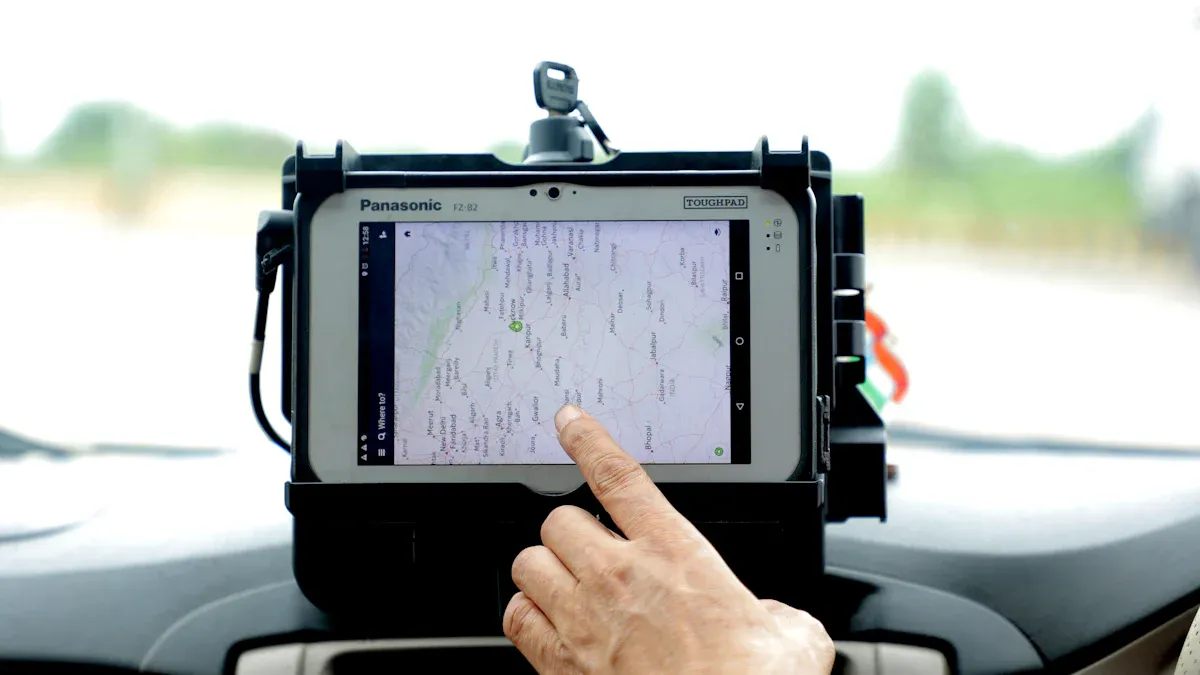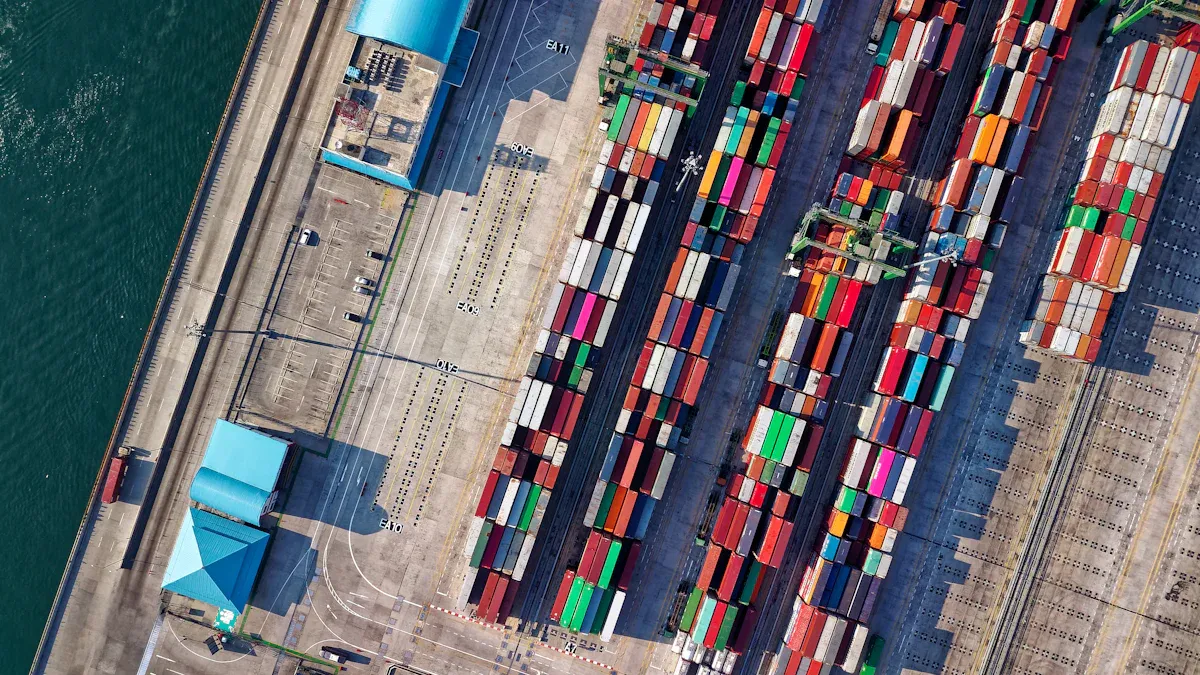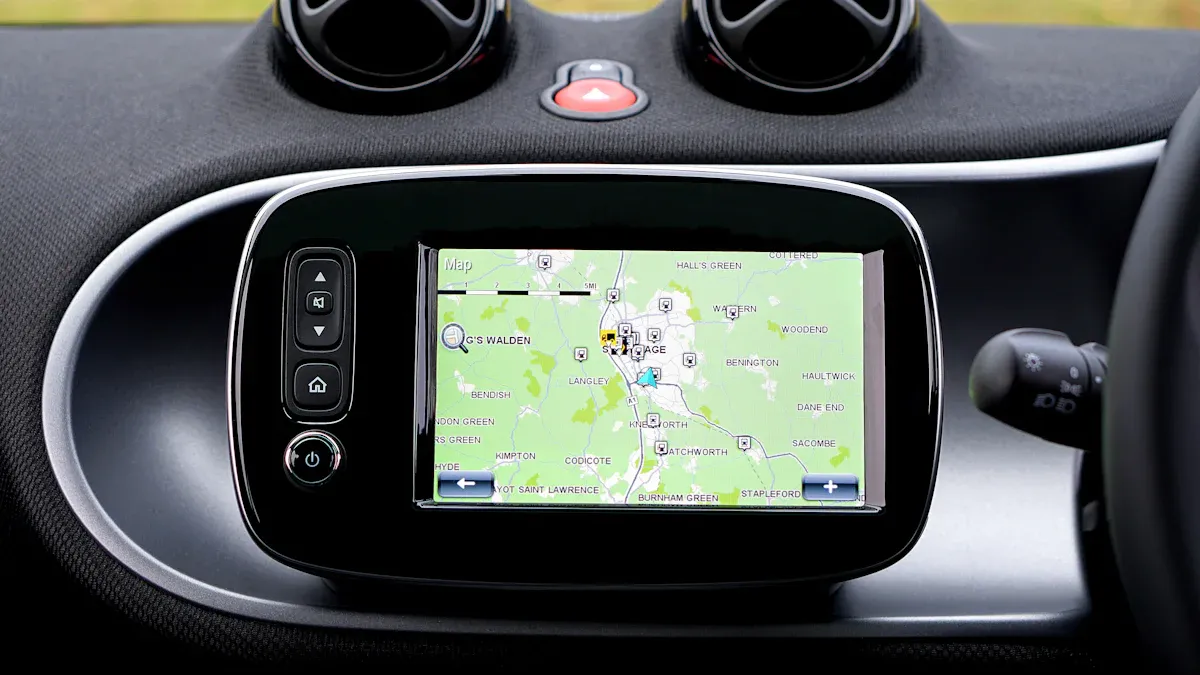How to Choose the Best North American Logistics Tracking Solution for Your Business

You want your business to run smoother and faster. Picking the right north american logistics tracking solutions means you get features that match your goals, reliable vendors, and room to grow. Logistics tracking matters in North America because it gives you real-time updates and helps your team spot problems before they slow you down. For example, a retail giant saw customer satisfaction jump by 30% after adding easy-to-use tracking apps. Take a moment to think about your biggest challenges and where you want your business to go next.
Key Takeaways
Identify your business challenges before selecting a logistics tracking solution. Knowing your pain points helps you find the right fit.
Choose a tracking system that offers real-time updates. This feature boosts customer satisfaction and helps you address delays quickly.
Look for a user-friendly design in your tracking solution. A simple interface improves team productivity and reduces errors.
Ensure your tracking solution can integrate with existing software. This connection streamlines operations and enhances decision-making.
Select a vendor with industry expertise and a strong track record. Good support and knowledge of North American logistics are crucial for success.
What Are Logistics Tracking Solutions

Logistics tracking solutions help you keep an eye on your shipments, packages, and inventory as they move from place to place. These tools let you see where your goods are at any moment. You can spot problems early and make better choices for your business. When you use north american logistics tracking solutions, you get updates that help you stay ahead of delays and keep your customers happy.
Why It Matters
You want your business to run smoothly. Logistics tracking solutions give you the power to do just that. Here’s what these systems can do for you:
Real-time visibility lets you know exactly where your shipments are.
You can boost efficiency by finding the best routes and cutting down on wasted time.
Customers feel happier because they get updates and know when to expect their orders.
Security comes first. You can stop theft and make sure your goods stay safe.
You save money by lowering transportation and inventory costs.
Data helps you make smart decisions and improve your process.
You stay on top of rules and industry standards.
Working closely with suppliers becomes easier.
You can spot risks early and avoid big problems.
Your business stands out because you deliver better service.
Tip: When you use north american logistics tracking solutions, you build trust with your customers and partners.
North American Logistics Tracking Solutions
You have a few main types of tracking solutions to choose from. Each one works a bit differently, so you can pick what fits your needs best.
Description | |
|---|---|
Barcode | A method of tracking items using printed barcodes that can be scanned. |
RFID Tag | A technology that uses radio waves to automatically identify and track tags attached to objects. |
Others | Other emerging technologies in logistics tracking. |
North american logistics tracking solutions often use a mix of these technologies. You can start simple with barcodes or go high-tech with RFID tags. Some businesses even try new tools as they grow.
Assess Your Business Needs
Identify Challenges
Before you pick a tracking solution, you need to know what slows you down. Every business faces different problems in logistics. Some of the most common challenges for North American companies include:
Supply chain disruptions from things like storms or health emergencies
Rising fuel costs that make shipping more expensive
The fast growth of e-commerce, which means customers want quicker deliveries
Labor shortages that make it hard to find and keep skilled workers
Tough rules and regulations that take time and money to follow
Inventory management issues, such as having too much or too little stock
Pressure to use greener, more sustainable practices
Take a few minutes to list your biggest pain points. Maybe you struggle with late shipments, or you find it hard to keep track of inventory. When you know your main challenges, you can look for north american logistics tracking solutions that solve those problems.
Tip: Write down your top three logistics headaches. This will help you focus on what matters most when you compare tracking systems.
Match to Business Size
Your business size shapes what you need from a tracking solution. Small and medium businesses often do not have a full logistics team. You might handle shipping yourself or rely on a small group. In this case, you want a system that is simple and easy to use. It should help you cut costs and avoid storing too much inventory.
If you run a larger company, you probably have staff who focus on logistics. You may need advanced features, like detailed reports or custom integrations. Big businesses can handle more complex systems, but they also need tools that work well with their current processes.
No matter your size, good communication with suppliers and partners is key. The right tracking solution should help you stay connected and keep your supply chain running smoothly.
Key Features to Consider

When you look for north american logistics tracking solutions, you want tools that make your job easier and your business stronger. Let’s break down the features you should focus on.
Real-Time Tracking
You want to know where your shipments are at every moment. Real-time tracking gives you instant updates, so you can spot delays and fix problems fast. Most customers expect this feature—88% want to track their orders in real time. Companies like Amazon have seen a 25% jump in customer satisfaction because they offer this level of transparency.
Real-time tracking improves operational efficiency, allowing customers to plan for delivery, which reduces missed deliveries and unnecessary customer service interactions.
With real-time tracking, you can:
Track import and export of raw materials.
Trace products inside your company and after they leave.
Document product history from manufacturing to delivery.
Manage safety recalls and product returns.
Lower paperwork and cut down on delivery status calls.
If you want happier customers and fewer headaches, make sure your tracking solution offers real-time updates.
Integration
Your tracking system should work well with other tools you use. Integration means your logistics tracking solution connects with software like order management, warehouse management, and shipping carriers. This saves you time and helps you avoid mistakes.
Here’s a quick look at important integration features:
Integration Feature | Description |
|---|---|
TMS | Works with Transportation Management Systems for better efficiency. |
ERP | Connects with Enterprise Resource Planning for central control. |
WMS | Links to Warehouse Management Systems for clear inventory views. |
CRM | Integrates with Contract Management Systems for smooth data handling. |
EDI | Supports Electronic Data Interchange for easy communication. |
Small Package | Tracks packages with UPS and FedEx for fast updates. |
Easy integration lets you connect your tracking solution to all your business systems. You get a complete view of your supply chain and can make smarter decisions.
Scalability
Your business will grow, and your tracking solution should grow with you. Scalability means your system can handle more shipments, new locations, and extra features as you expand.
GPS, RFID, and supply chain software help you see shipments and inventory in real time.
These tools let you respond quickly when your business gets bigger.
Dynamic routing helps you save time and money by finding the best delivery routes.
Data-driven decisions become easier with analytics and real-time monitoring.
If you plan to expand, pick a solution that won’t slow you down. You want a system that can handle more work without breaking a sweat.
Security
You need to keep your shipment data safe. Security is a must for any logistics tracking solution. Look for systems that follow standards like ISO 27001, which protects sensitive information.
Use tamper-evident seals and secure facilities.
Rely on real-time tracking and geofencing for digital protection.
Make sure your partners follow strict security rules.
Document and verify shipments before they leave your warehouse.
A secure system keeps your goods safe and builds trust with your customers.
User-Friendly Design
If your tracking solution is hard to use, your team won’t use it. A user-friendly design makes training easy and boosts productivity. Employees work faster and make fewer mistakes when the software is simple and clear.
Impact of User-Friendly Design | Result |
|---|---|
Easy to learn | Faster training, less confusion |
Clear interface | Fewer errors, better adoption |
Helpful support | Quick answers, less frustration |
Design matters. When your team likes the software, they use it more. This leads to better customer service and a stronger brand.
Tip: Choose a solution that looks good and feels easy to use. Your team will thank you, and your customers will notice the difference.
Evaluate Vendors
Choosing the right vendor for your logistics tracking solution can make or break your supply chain. You want a partner who understands your business and helps you reach your goals. Let’s look at what matters most when you evaluate vendors.
Industry Expertise
You need a vendor who knows the ins and outs of logistics in North America. The best vendors do more than sell software—they help you manage information, track carrier performance, and keep your shipments secure. Here’s how you can spot true industry experts:
Align on information management tactics.
Monitor carrier delivery metrics.
Discuss differentiating credentials.
Review security capabilities. 5. Prioritize a transparent, honest relationship.
Look for vendors with certifications like ISO 9001:2008, MnSHARP Program, or Good Manufacturing Practices (GMP). These show that the company meets high standards for safety and quality. Vendors familiar with North American regulations and best practices will help you avoid costly mistakes.
Track Record
You want proof that your vendor delivers results. Customer reviews and case studies tell you how well a vendor performs in real life. Check out these examples:
Vendor Case Study | Improvement Metrics | Description |
|---|---|---|
Global Parcel Carrier | Live shipment monitoring and predictive ETAs improved delivery and trust. | |
Pan-African Retail Group | 15% faster deliveries, NPS +15 | Unified shipment visibility led to faster deliveries and happier customers. |
Furniture Retailer | 97% ETA accuracy, 24% on-time deliveries | AI routing and slot-based checkout reduced failed drop-offs. |
Read reviews and ask for case studies. You’ll see which vendors have a strong track record and which ones fall short.
Support
Great support keeps your logistics running smoothly. You want a vendor who offers more than just software. Look for companies that provide transportation management, dock scheduling, yard management, and AI-powered insights. Some vendors also offer global trade management, order management, and warehouse execution systems.
Vendor | Core Solutions | Additional Solutions |
|---|---|---|
Log-net | Global trade, order, transportation, warehouse management | AI, asset management, digital twins, predictive analytics, reverse logistics |
Logility | Cloud-based demand, inventory, supply plans | Demand planning, inventory optimization, supplier management, network optimization |
Logistics Plus | MyLogisticsPlus™ platform, order management, inventory | Business intelligence, global supply chain control towers, managed transportation |
LogistiVIEW | Warehouse execution, order flow orchestration | Labor management, predictive analytics, robotics/automation |
Ask vendors about their support services. Make sure they offer help when you need it and can grow with your business. The right partner will help you get the most from north american logistics tracking solutions.
Tip: Always research vendor reputation before you decide. Customer reviews and case studies reveal how vendors handle real challenges.
Cost and Growth
Pricing
You want to know what you’ll pay for a logistics tracking solution. Costs can vary based on your business size and needs. Here’s a quick look at typical pricing in North America:
Service Type | Typical Cost |
|---|---|
Small Business (Low Volume Orders) | $500 to $2,000 per month |
Mid-Sized Business (Moderate Order Volume) | $2,000 to $10,000 per month |
Large Enterprise (High Volume & Custom Needs) | $10,000+ per month |
Per Pallet Storage | $20 to $25 per pallet per month |
Per Bin Storage | $5 to $8 per bin per month |
Pick and Pack Fees | $1.50 to $5 per item |
Packing Materials | $0.50 to $3 per order |
Kitting and Assembly | $35 to $45 an hour |
Receiving Fees | $35 to $45 per hour or $5 to $15 per pallet |
EDI/API Setup | $100 to $1,000 (one-time fee) |
Logistics costs can make up almost a third of your delivery expenses. Transportation is usually the biggest part. As your business grows, you need to watch these costs closely. Investing in efficient tracking helps you save money and avoid surprises.
Note: High upfront costs for advanced tracking software can be tough for small businesses. You may need to balance features with your budget.
Customization
You want a solution that fits your business, not just a one-size-fits-all system. Leading logistics tracking platforms offer many ways to customize:
Customization Feature | Description |
|---|---|
Tailor-made Solutions | Custom shipping and tracking software built for your needs. |
Real-time Data Analysis | Tools that help you track inventory and orders as they happen. |
Centralized Visibility | One dashboard for all your supply chain info. |
IoT Integration | Devices that track vehicles and goods live. |
AI-driven Features | Smart tools for route planning and capacity. |
Blockchain Technology | Extra security and transparency for your shipments. |
Different industries need different solutions. For example, healthcare and entertainment companies have special delivery needs. Providers work with you to design strategies that match your products and customers. Flexible systems let you adjust as your business changes, so you stay efficient and keep customers happy.
Planning for Scale
You want your logistics tracking to grow with your business. Smart solutions help you plan for the future. Here are some strategies you can use:
Route optimization software finds the best delivery paths.
Real-time tracking keeps you updated on every shipment.
Predictive analytics help you plan inventory and forecast demand.
IoT and smart sensors protect sensitive goods.
Automation and robotics speed up warehouse work.
You can also use a multiple carrier strategy to lower risk. Visibility across your supply chain helps you make quick decisions. Adaptive freight routing lets you change plans if something goes wrong. Good communication with partners keeps everything running smoothly.
North America leads the way in Tracking as a Service (TaaS). Big companies and new tech make it easier for you to expand. Satellite tracking gives you real-time data, even for global shipments. As the market grows, you get more options to boost your supply chain and reach new customers.
Choosing the best logistics tracking solution helps you grow your business and stay competitive. You should look for technology partners that match your needs and budget. Make sure your team gets proper training and your system follows privacy laws.
Automation and AI tools make your work easier.
Real-time tracking improves compliance and cuts costs.
Green logistics and data-driven strategies boost efficiency.
Start your selection process today. Compare options, ask for demos, and reach out to experts like North American Logistics Services Inc., GlobalTranz, or Averitt for advice.
FAQ
What is a logistics tracking solution?
A logistics tracking solution helps you see where your shipments and inventory are at any time. You get updates, spot problems early, and keep your customers happy.
How does real-time tracking help my business?
Real-time tracking lets you know where your goods are right now. You can fix delays fast, answer customer questions, and plan better. Your team works smarter.
Can I use logistics tracking with my current software?
Most tracking solutions connect with popular business tools. You can link them to your order system, warehouse software, or shipping carriers. Ask vendors about integration options.
Is it expensive to start with logistics tracking?
Costs depend on your business size and needs. Small companies pay less, while big ones pay more for advanced features. You can start simple and add more as you grow.
What should I look for in a vendor?
Tip: Choose a vendor with strong industry experience, good customer reviews, and helpful support.
Check if they know North American rules and offer training for your team.
See Also
Simplifying Supply Chain Management With U.S. Logistics Solutions
Efficient Warehouse Solutions In Miami For Quick East Coast Shipping
Key Strategies For Effective Management Of Global Logistics
Optimizing East Coast Imports With Premier Logistics Solutions
Enhancing West Coast Freight Services With Flexible Trucking Solutions
